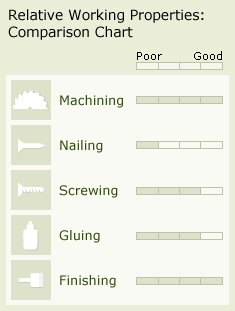
Poplar (Liriodendron spp.)

Poplar (Liriodendron spp.) is native to North America. Species look alike microscopically. The word quercus is the classical Latin name of oaks, said to be derived from Celtic fine and tree.
Grades Available: Fas/1Face, 12” & Wider Fas/1Face, Select, #1 Common, #2 Common
Sizes Available: 4/4, 5/4, 6/4, 8/4, 12/4
Distribution: Most of the eastern United States.
The Tree: Yellow Poplar trees reach heights of 160’ ft with a diameter of 8’ ft. It is probably the tallest hardwood tree in the eastern United States.

General Wood Characteristics: Yellow poplar sapwood is white, sometimes with stripes; the heartwood is usually tan, but can range from greenish brown to dark green, purple, black, blue and yellow. The wood is straight grained, uniform in texture and moderate to light weight. Among commercially important hardwoods in the United States, yellow poplar ranks in the lower third of the range of the following properties: specific gravity, bending strength, toughness, impact resistance, work to maximum load, crushing strength, fiber stress at proportional limit, shear strength, tensile strength and side hardness.
Working Properties: Yellow poplar has the reputation of being one of the easiest of all hardwoods to work with hand and machine tools. It works well in planning, turning, gluing and boring. It is average in mortising and nail- and screw-holding abilities but poor in shaping and sanding. It holds stain and paint well.
Durability: Rated as slightly or nonresistant to heartwood decay.
Uses: Lumber, veneer, pulpwood, furniture, plywood, interior finish, dimension stock, gunstocks, musical instruments, toys, novelties, hatblocks, sporting goods, pallets, shipping crates, slack cooperage, particle board.

